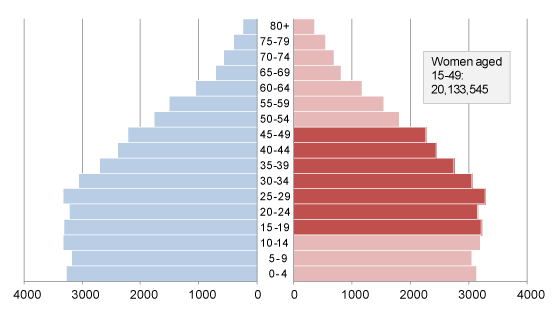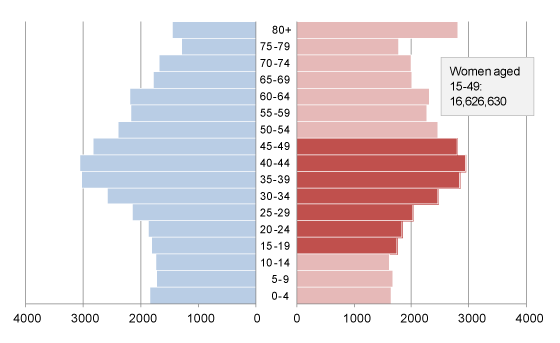Age structures and demographic events (cont.)
The interaction between fertility and the age structure
Fertility is incredibly important in determining the age structure of a population, having the greatest long-term effect on a population’s age structure.
This may seem counterintuitive, as fertility can only affect the size of the youngest age group as all births necessarily enter the population at age 0. However, this cohort will remain in the population (and thus affect its age structure) until all members have died.
In turn, the age-sex structure of a population also affects the number of children being born. A given fertility level (and pattern) will translate into more or less live births depending on the relative share of women at reproductive ages in the population. For example, if there are a large number of women of reproductive age, there will be a large number of births, even if the birth rate is low.


The first graph shows Turkey’s age-sex structure as it was in 2010. In the second graph, the age structure has been changed, ageing Turkey’s population. The number of people remains the same, the only thing that has changed in the age structure. Despite the number of people remaining the same, the change in age structure has affected the number of women of childbearing age (highlighted bars).